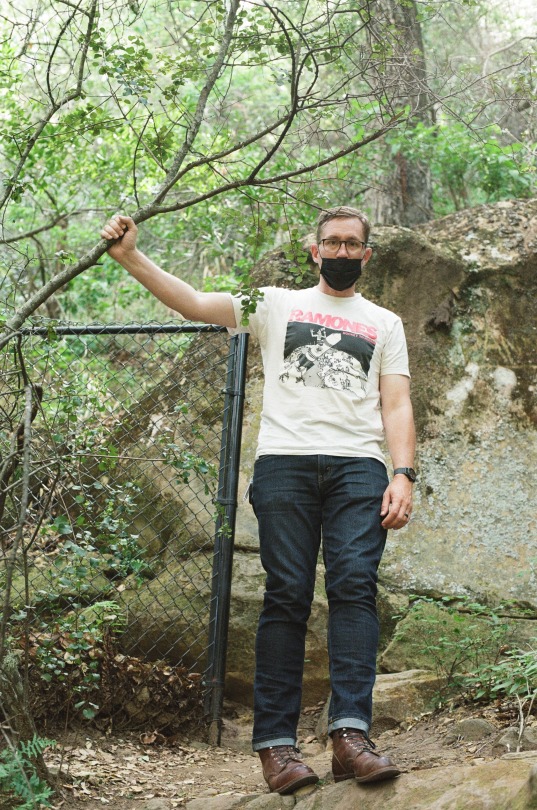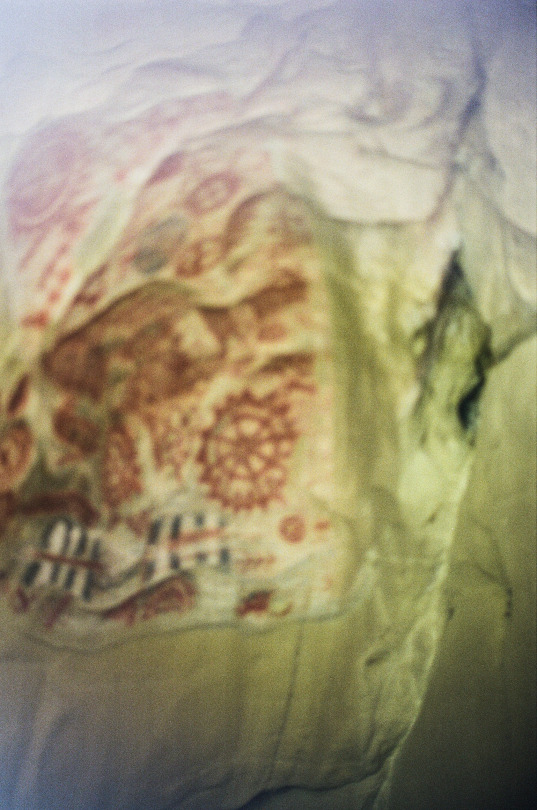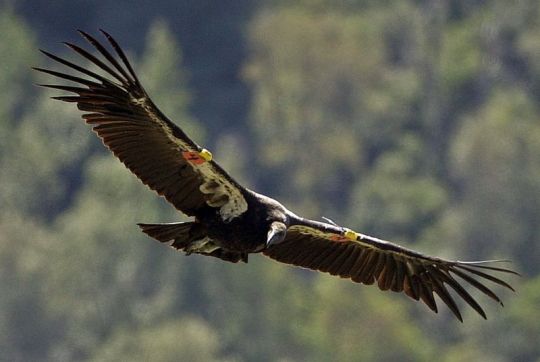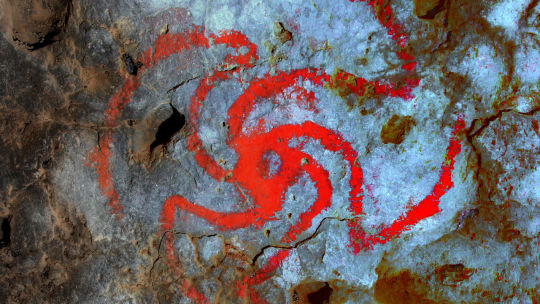#chumash painted cave
Note
what cave wall is your banner from. also have you read claymore? i think you would like it
chumash rock art but this one in particular is taken from john linkoln's painting. i actually didn't know the origin of the png i found and now that i do i probably shouldn't have a white man's fanart of indigenous art as a banner pic. sorry

https://northernchumash.org/ways-to-give/ ← you can give money to the northern chumash tribal council
6 notes
·
View notes
Text
Episode 3: Chumash Rock Art & Cave Paintings
youtube
0 notes
Photo





#santa barbara#chumash#chumash painted cave#pictograph#35mm#35mm color#lomo 400#lomo film#lomography#lomographyfilm#film photography#film camera#film#nikonf3hp
13 notes
·
View notes
Note
I found a bird that looks like you just google search "California condor face" fun fact: cave paintings of this bird were discovered, he is one of the oldest birds and they survived three decades of being pushed to the brink of extinction by poisoning and hunting Fun fact 2: they don't have vocal chords so they can only hiss Fun fact 3: they eat bones (and they can eat an entire whale)


(Pictured: Condor Cave, a Chumash sacred site, features a condor in flight.)

it does not surprise me for a single godsdamn minute that this bastard can and would happily eat an entire whale
2K notes
·
View notes
Text
cute ‘bill cipher is real and we all played into it’ looks:
chumash painted cave

lol

the whole thing where ‘bill cipher’ is just an alias


a different form a different time
so there’s a few things i would like to toss out into ‘question reality land’
1. bill works or worked thru alex like a familiar/muse or something quite similar to that concept, but i think(hope?) it was subconscious and non-intentional... think Stanford
&
2. the show “Gravity Falls” is the weirdness phenomenon bubble!!!! bill, subjected to playing a role in a children’s cartoon through disney to make himself known by everyone— a million zillion peepholes in an instant.... blammo.... it was probablyworth the humiliation and degradation of looking like he suffered a great loss due to his own foolishness (how old is he again...? how long was he attempting to gain physical form? where is the logic to the shows ending?)
3. the seed was planted in 2012, you know, the year the world was supposedly going to end (again)
4. is the show gravity falls a “looking glass” ?
#gravity falls#bill cipher#dipper pines#mabel pines#stanley pines#stanford pines#alex hirsch#cipher#theories#multiverse#multiverse theories
130 notes
·
View notes
Text
im writing part of my paper on the Chumash painted cave site and here’s a link to a 3d scan of the cave if anybody wants to look at it with me
#im talking abt different theories of function and symbolism and relating them to a contemporary chumash artist lots of fun#ramblings
4 notes
·
View notes
Photo

“Curious bearlike being, show imposition. On a rock lying in a cave.” Rock Paintings Of The Chumash. 1966.
Internet Archive
298 notes
·
View notes
Photo


Chumash Painted Cave
3 notes
·
View notes
Text
I went waltzing through one of the things that never seems to leave my mind, the idea of Bill Cipher’s existence as a concept in our own realm.
I stumbled across a thread from 2016 that had some interesting pictures attached.


Only one person had anything to say towards discounting this thus far, they claimed that these images are upside down.
Well, it drove me to look into finding other images of the same location, a park in California called Chumash Painted Cave Historic Park.


These paintings are legitamate.
I have since been combing the internet for an idea of what this could be that any of us could be matrixing, but any detailed lore is difficult to come by. If anyone has any ideas on what this could be, or other pictures of this cave or similar paintings/carvings: please share! I honestly cannot shake the unparalleled sense of uncanny resemblance- the way the Bill-like shape is set off on its own to the side with its arms up like that, it makes me feel like its shaping the rest of the painting.
#gravity falls#bill cipher#bill cipher theory#multiverse theory#chumash#chumash tribe#chumash painting caves#chumash painted cave historic park
28 notes
·
View notes
Link



Excerpt from this story from The Signal from the Santa Clarita Valley:
For decades, we’ve fought to save California condors from extinction. After 40 years of protection, these magnificent birds are slowly recovering. But they remain among the world’s most imperiled animals.
While condors are iconic to all Californians, they’re especially important to native people. Condors appear in cave paintings, traditional stories, oral histories, and both ancient and contemporary Native California ceremonies and regalia. For millennia, they’ve been integral to the cultures and religions of indigenous peoples, including the Chumash.
We have a sacred responsibility to protect our condor relatives. That’s why Chumash people have actively taken part in both bringing the last 22 California condors into the captive breeding program and in holding ceremonies for the release of condors as the program became successful.
Yet now condors may lose one of their most important remaining habitats because the federal government has approved a massive new Kern County development in the heart of condor country, not far from Santa Clarita.
Approval of this development, Tejon Mountain Village, by federal wildlife officials flies in the face of our native cultural practices and the condor’s needs.
The proposed luxury resort would destroy 28,500 acres of pristine habitat crucial for the condors’ recovery. The proposed buildout includes two golf courses, an equestrian center, up to 3,450 residences and 750 high-end hotel rooms.
In April, Wishtoyo Foundation joined indigenous and conservation groups in suing the U.S. Fish and Wildlife Service for authorizing the plan. The service approved the plan some years ago, but with construction now imminent, we had to act.
Despite its legal obligation under the National Historic Preservation Act, the service didn’t adequately consult native people on the religious and cultural significance of condors. We demand to be heard on Tejon Mountain Village’s threat to these birds and our culture.
2 notes
·
View notes
Photo

One of the most beautiful places I’ve ever seen. I’m glad it’s well protected and ashamed that it has to be. It’s just incredible. (at Chumash Painted Cave State Historic Park) https://www.instagram.com/p/Cb8bf-ePT6k/?utm_medium=tumblr
0 notes
Text

November 27, 2020
Ancient Pacific Coast Rock Art Paintings and Hallucinogens
Researchers have deduced that rock paintings done by ancient Chumash people in Pinwheel Cave, California were setting the scene for tribal members going into a trance after taking the hallucinogenic plant datura, also known as jimson weed and angel trumpet. The paintings reference the shared tradition of taking that hallucinogen in that cave. The paintings look like an opening datura flower
Researchers knew the Chumash used datura for healing, to counter supernatural forces, for divination, to find lost objects, for medicine, and for coming of age ceremonies.
The researchers found quids stuffed into ceiling crevices. Quids are chewed all over the Ancient Southwest for nutrients or stimulants, including yucca, agave, tobacco. The quids at Pinwheel Cave were also chewed.
A chemical analysis revealed the presence of the Datura's hallucinogenic compounds atropine and scopolamine, and a scanning electron microscope analysis further identified the quids as Datura, although one quid was made of yucca. The tribal members stuck chewed quids on to the ceiling. This cave was in use from 1600-1800 CE.. Projectile points and an arrow shaft straightener were found in the cave as well. There were ground seeds and animal remains indicating the cave was used for food preparation, storage and communal meals.
The research is published in the Proceedings of the National Academy of Sciences.
Live Science has the report here with photos:
https://www.livescience.com/rock-art-hallucinogen-california.html
Mike Ruggeri’s Moundbuilders/Ancient Southwest News on Tumblr
http://mikeruggerisancientnorthamerica.tumblr.com
0 notes
Text
Cave in California holds first evidence of humans taking hallucinogens, study says
https://sciencespies.com/humans/cave-in-california-holds-first-evidence-of-humans-taking-hallucinogens-study-says/
Cave in California holds first evidence of humans taking hallucinogens, study says

Just before going into a hallucinogenic trance, Indigenous Californians who had gathered in a cave likely looked up toward the rocky ceiling, where a pinwheel and big-eyed moth were painted in red.
This mysterious “pinwheel,” is likely a depiction of the delicate, white flower of Datura wrightii, a powerful hallucinogen that the Chumash people took not only for ceremonial purposes but also for medicinal and supernatural ones, according to a new study.
The moth is likely a species of hawk moth, known for its “loopy” intoxicated flight after slurping up Datura’s nectar, the researchers said.
Chewed globs that humans stuck to the cave’s ceiling provided more evidence of these ancient trips; these up to 400-year-old lumps, known as quids, contained the mind-altering drugs scopolamine and atropine, which are found in Datura, the researchers said.

(Devlin Gandy)
The finding marks “the first clear evidence for the ingestion of hallucinogens at a rock art site, in this case, from Pinwheel Cave, California,” the researchers wrote in the study, published online today (Nov. 23) in the journal Proceedings of the National Academy of Sciences.
The artists probably weren’t high when they drew the rock art, however. “It’s extremely unlikely because of the debilitating effects of Datura,” study lead researcher David Robinson, a reader in archaeology at the University of Central Lancashire in England, told Live Science.
Rather, just like religious artwork and objects at a church, these rock paintings were likely “setting the scene,” and helping people about to go into a trance understand the flower’s power and the shared tradition of taking the hallucinogen in that particular cave, he said.
Coming of age ceremony
Archaeologists first learned about the rock paintings in 1999, when workers at Wild Wolves Preserve, a nature preserve about 90 miles (145 kilometers) northeast of Santa Barbara, found a pinwheel and insect painted with ochre, a reddish mineral used in cave art around the world.
At first glance, the 4-inch by 7-inch (10.5 by 17 centimeters) pinwheel drawing doesn’t look much like a Datura flower, but any botanist would tell you otherwise. Datura, also known as jimsonweed and angel trumpet, unfurls at dusk and dawn when insects pollinate it, but during the heat of the day it twists up.
It’s possible this cave painting features an “opening Datura flower,” the researchers wrote in the study.

Datura wrightii. (denisenv/iNaturalist/CC-BY-ND)
Researchers already knew that the Chumash people used Datura for ceremonies and in everyday life, according to historic descriptions from missionaries and anthropological work.
Historians think Datura was used to “gain supernatural power for doctoring, to counteract negative supernatural events, to ward off ghosts, and to see the future or find lost objects, but, most especially, as a mendicant for a variety of ailments,” the researchers wrote in the study.
It was also put in a tea called toloache for a coming-of-age ceremony for boys, and sometimes girls, who took the trance-inducing plant to mark their entrance into adulthood, Robinson said.
However, Robinson and his colleagues needed more evidence than cave art to suggest that Indigenous people used this site for Datura ceremonies. So, the team investigated the mysterious quids stuffed into the ceiling’s crevices.
Quids, known from other archaeological sites in the American Southwest, are plants usually chewed for their nutrients or stimulants, including yucca, agave or tobacco. In this case, 3D digital microscopy revealed that the quids in Pinwheel Cave were also likely chewed.
“[The quids] consistently had indentations that we would expect from molars, so it appears that they had inserted it into their mouth and chewed,” Robinson said.
The quid fibers were also matted together, and “you would expect that to occur through some sort of moisture that would make it adhere, such as human saliva,” he said.

A moth like the White-lined Sphinx (Hyles lineata), was also depicted in the cave. (xpda/iNaturalist/CC-BY-SA-4.0)
Meanwhile, a chemical analysis revealed the presence of the Datura‘s hallucinogenic compounds atropine and scopolamine, and a scanning electron microscope analysis further identified the quids as Datura, although one quid was made of yucca.
Radiocarbon dating shows the cave was used on and off again from about 1600 to the late 1800s. And Indigenous people used the cave for many other purposes: The archaeologists also found projectile points and an arrow shaft straightener – indicating the cave may have served as a place for preparing hunting tools. Likewise, ground seeds and animal remains suggest the cave was used for food preparation, storage and communal meals.
The new discovery helps dismantle the myth of the lone shaman, going into a cave by himself to have a mystical experience, Robinson said.
“This is a community site,” Robinson said. He added that today’s Tejon Indian Tribe, composed of the descendants of the Chumash, Yokuts and Kitanemuk peoples, use the site today.
Indigenous people around the world, including ancient cultures in Siberia, North America and South America, are known to have taken mind-altering substances, said Patrick McGovern, the scientific director of the Biomolecular Archaeology Project at the Penn Museum in Philadelphia, who was not involved in the study.
And this study used cutting-edge techniques “to elucidate an important biocultural issue – the use of hallucinogens by peoples of the Americas,” McGovern told Live Science in an email.
This article was originally published by Live Science. Read the original article here.
#Humans
0 notes
Photo

Chumash art on the walls of Painted Cave in the mountains above Santa Barbara https://www.reddit.com/r/ArtefactPorn/comments/73xx6a/chumash_art_on_the_walls_of_painted_cave_in_the/
102 notes
·
View notes
Photo










GAME OF THRONES: SEASON 7, EPISODE 4
Winter is coming. All men must die. And Game of Thrones is back! Stay tuned each week as we unpack Sunday’s episodes through masterpieces.
Enough with clever plans.
A horde of hard-won gold is transported in order to pay a debt to an exacting banker. An advisor with his own agenda makes a gift of a distinctive dagger, which is then passed on to a new owner perhaps more skilled in its use. A girl returns to her ancestral homeland and doesn’t quite receive the welcome she might have expected, though she happily reunites with long-lost relatives.
On a remote island in the south, an expedition to mine a very valuable material gets its start, and in the process, ancient clues are found in the painted caves. Advisors and former enemies bring news of faraway battles to their shores.
Meanwhile, back in the north, a girl shows some particular skill in close combat against a friendly, but formidable, opponent as they train for battles to come. An epic and bloody battle sees dragons pitted against footsoldiers. A new and powerful weapon is unleashed against the invading queen, and valiant attempts are made to slay the dragon as it attacks a supply chain, but not before the conflict devolves into a conflagration of flames and destruction.
These week’s wildcard image is of the Chumash Caves (Santa Barbara, CA, c. 800-1500 CE). The dagger comes from the Los Angeles County Museum of Art, the mining image comes from the Wellcome Library, and the spectacular dragon comes from the Metropolitan Museum of Art.
Dive deeper with featurettes connecting the history of the Middle Ages to the making of fantasy TV.
118 notes
·
View notes


